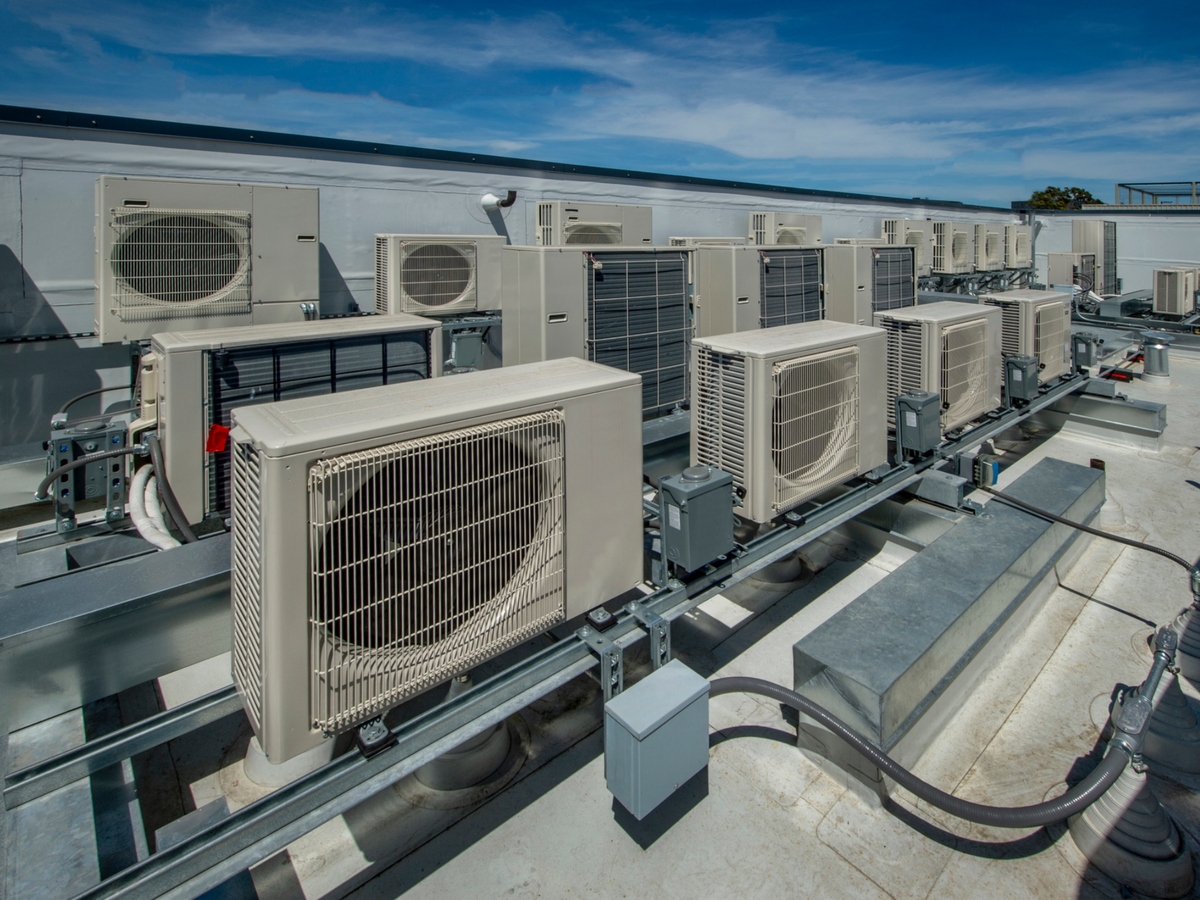Air source heat pumps (ASHPs) are becoming increasingly popular as a sustainable and efficient solution for heating and cooling buildings. By leveraging the ambient air outside, these systems offer a renewable alternative to traditional heating methods. This article explores the workings, benefits, types, and considerations of air source heat pumps.
How Air Source Heat Pumps Work
An air source heat pump transfers heat from the outside air to the inside of a building. Even in cold weather, there is some heat in the air. The process involves four main steps:
- Evaporation: The refrigerant in the evaporator coil absorbs heat from the outside air, causing it to evaporate into a gas.
- Compression: The compressor pumps the gas, raising its temperature and pressure.
- Condensation: The hot gas moves to the condenser coil inside the building, releasing heat as it condenses back into a liquid.
- Expansion: The refrigerant then passes through an expansion valve, cooling it down before it returns to the evaporator to start the cycle again.
Types of Air Source Heat Pumps
- Air-to-Air Heat Pumps: These systems transfer heat between the outside air and the air inside the building. They are primarily used for space heating and cooling.
- Air-to-Water Heat Pumps: These systems transfer heat from the outside air to a water-based heating system, such as radiators or underfloor heating. They can also provide hot water.
Benefits of Air Source Heat Pumps
- Energy Efficiency: ASHPs are highly efficient, often achieving a coefficient of performance (COP) of 3 or higher. This means they can produce three units of heat for every unit of electricity consumed.
- Lower Carbon Footprint: By using renewable energy from the air, ASHPs reduce reliance on fossil fuels and lower greenhouse gas emissions.
- Cost Savings: Despite the higher initial investment, the operational savings due to reduced energy bills can offset the costs over time.
- Versatility: ASHPs can provide both heating and cooling, making them suitable for year-round use.
- Ease of Installation: Compared to ground source heat pumps, ASHPs are easier and less expensive to install, as they do not require extensive groundworks.
Considerations and Challenges
- Initial Costs: The upfront õhksoojuspumba projekt cost of an ASHP system can be higher than traditional heating systems. However, government incentives and rebates can help mitigate this expense.
- Performance in Cold Climates: ASHPs are less efficient in extremely cold temperatures. Modern systems, however, are designed to operate effectively in colder climates, sometimes with supplemental heating options.
- Noise: The outdoor unit can produce noise, which may be a concern in noise-sensitive areas. Proper placement and modern, quieter designs can alleviate this issue.
- Space Requirements: Adequate space is needed for the outdoor unit, which must have good airflow to function effectively.
Installation and Maintenance
Professional installation is crucial for optimal performance. The process involves selecting an appropriately sized system, placing the outdoor unit in a location with good airflow, and ensuring the indoor distribution system is compatible.
Regular maintenance includes:
- Checking refrigerant levels.
- Cleaning filters and coils.
- Inspecting and cleaning the fan.
- Ensuring the system is free of obstructions.
Conclusion
Air source heat pumps represent a forward-thinking approach to residential and commercial heating and cooling. With benefits ranging from increased energy efficiency to reduced environmental impact, they are an attractive option for those looking to embrace renewable energy technologies. Despite some challenges, advancements in technology continue to improve their performance and accessibility, making ASHPs a viable solution for a sustainable future.


